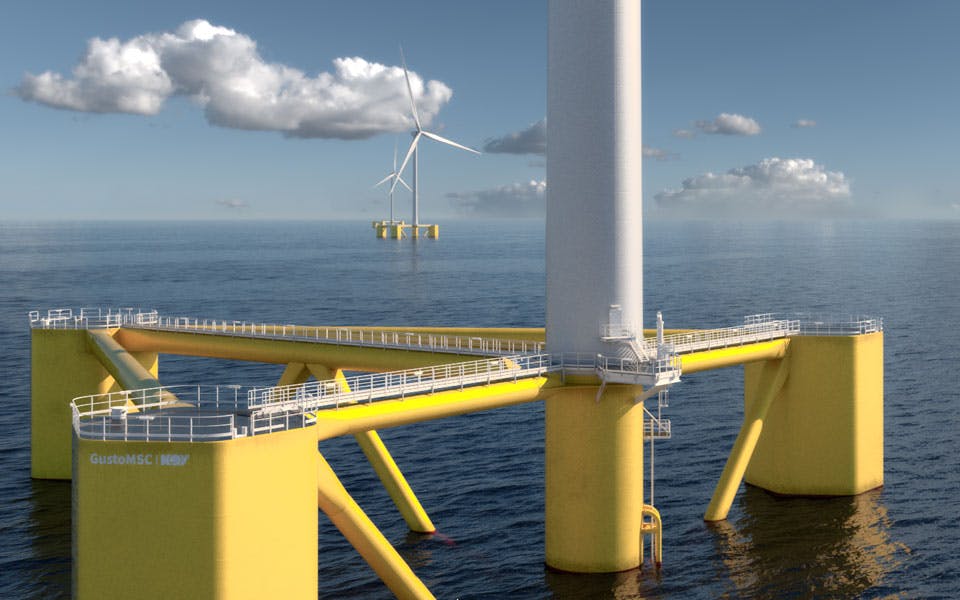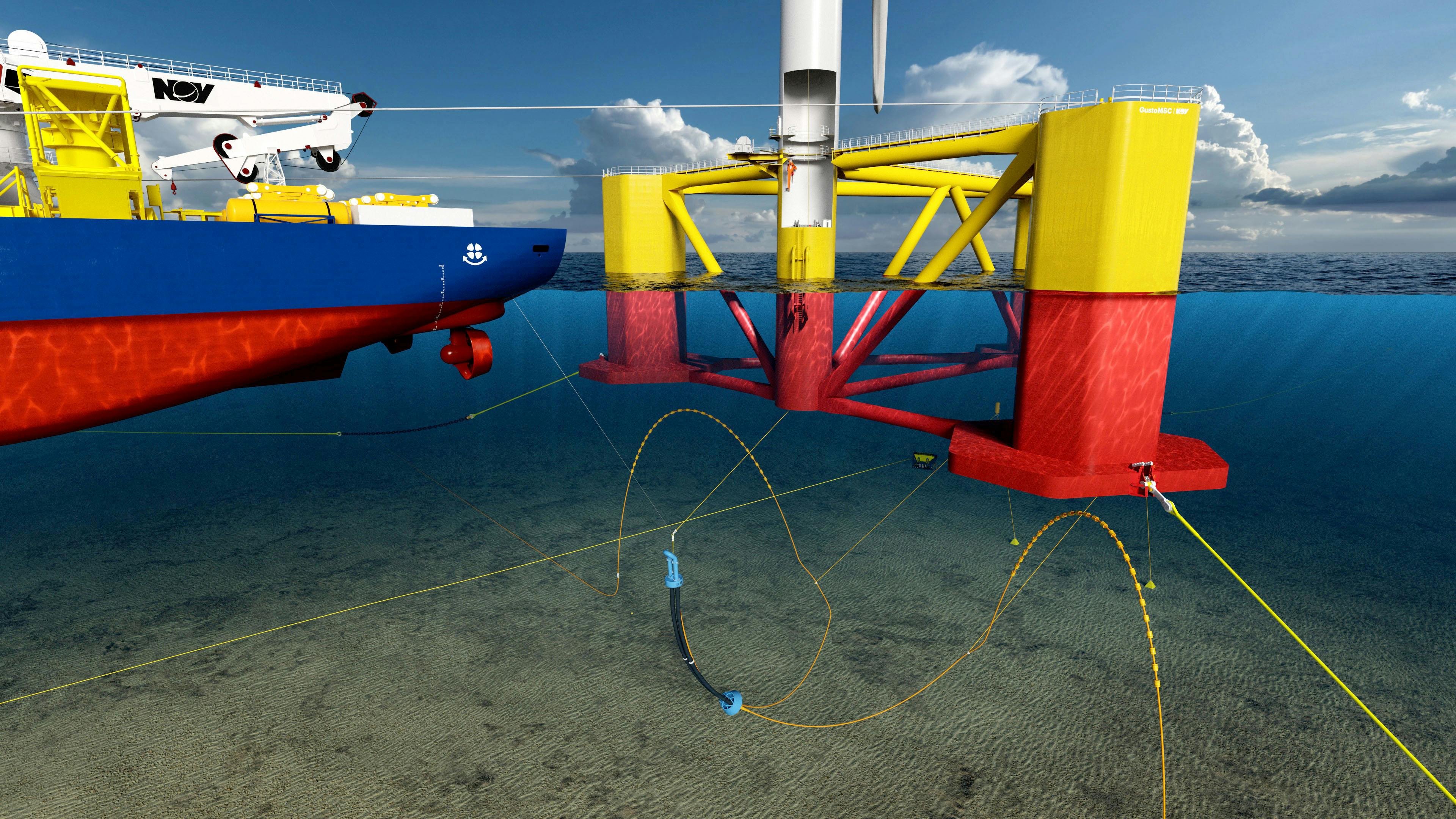Outstanding performance
The Tri-Floater is based on more than 20 years of R&D on semi-submersible applications for floating offshore wind turbines at GustoMSC. All these efforts are further backed by GustoMSC’s extensive track record in semi-submersible design with more than 50 new build references, an unparalleled track record in the industry.
Modular platform for efficient mass production
Recognizing the high unit volumes that are required to make the floating wind industry an enabler for renewable energy production at scale, efficient manufacturing has been an absolute priority in the design of the Tri-Floater.
Hexagonal buoyancy columns
The buoyancy columns of the Tri-Floater are designed for low weight and maximized volume, while still allowing for efficient production. The hexagonal shape of the Tri-Floater buoyancy columns maximizes the flat plate area, which can be efficiently produced on fully automated flat panel lines. This allows the buoyancy columns to be produced at a high throughput and low cost with excellent quality.
Shallow draft in port
The innovative (patent pending) column arrangement of the Tri-Floater – in which the wind turbine is located between two buoyancy columns – results in minimal water ballast requirements, ensuring an ultra-shallow draft of less than 10 m for all temporary conditions with the wind turbine installed.
Site optimized
While modularity focuses on standardized manufacturing processes, the size and shape of the Tri-Floater and local details like plate thicknesses are optimized for site and turbine specifics.
Flexible supply chain
- The hexagonal stiffened thin-walled buoyancy columns are optimized for automated panel production lines widely available within the shipbuilding industry.
- The unstiffened thick-walled column supporting the wind turbine column is a continuation of the wind turbine tower. The highly optimized manufacturing facilities of monopile fabricators and wind turbine tower supply chain can be leveraged for efficient manufacturing.
- The bracings are typical of the jacket industry, which is also characterized by high production efficiencies.
Local final assembly
Floating wind farms are designed for areas characterized by high winds and associated weather conditions. To reduce risks associated with prolonged ocean tows, the floater assembly site must typically be located relatively close to the wind farm location.
Disconnection without loss of power production
Floating wind turbines are typically expected to be arranged in cable arrays of roughly 5 units in serial connection to simplify the subsea HV cable layout. This means that if a single floater within the array is disconnected, e.g., during a tow-to-port scenario, the remaining units within the array are disconnected as well and cannot deliver power to the grid.
Optimized mooring system
The mooring system of the Tri-Floater is designed by APL, a sister company with vast experience in permanent mooring systems. The mooring design is composed of predominantly synthetic ropes, which can be manufactured at scale, have excellent fatigue properties and benefits in terms of offshore handling.





